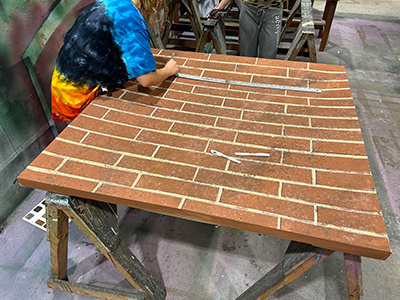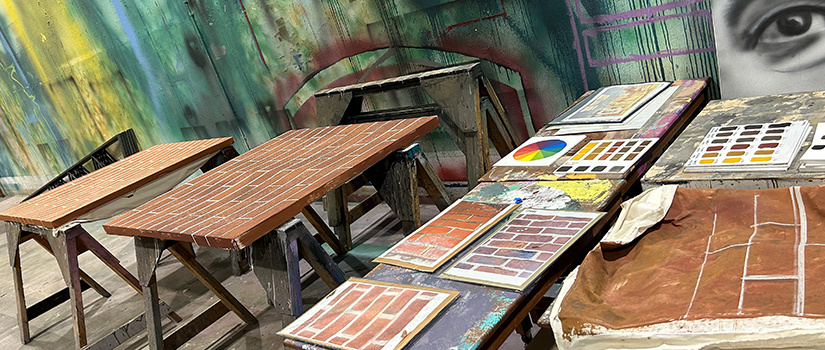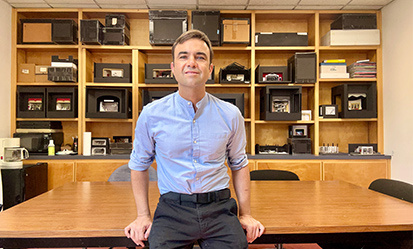Erik Flatmo is internationally recognized for his scenic design work in contemporary dance, and he has designed scenery for a broad range of theater, dance and opera productions. Additionally, he has designed over 20 original productions at San Francisco’s Magic Theatre.
After earning an MFA from Yale School of Drama and a B.A. from Columbia University, he taught scenic design for 14 years as a faculty member in Stanford University's Department of Theatre & Performance Studies, followed by a year as a visiting professor at the Herberger Institute for Design and the Arts at Arizona State University. Beyond his work in theater, he has completed projects in fashion and independent film.
Q: Where do you call home? Tell us about your academic and professional journey so far.
A: I was born and raised in Palo Alto, CA, and went to school at Columbia University and Yale. I am a set designer for plays, operas and dance, and through my work and teaching I have gotten to live and work all over the globe. Previously I taught at Barnard, Stanford and Arizona State universities.
Q: What first drew you to your main area of expertise? What do you love about it?
A: I studied architecture as an undergraduate and just loved it. I took naturally to working in a design studio, sketching, drafting and building scale models. I started spending every minute of my spare time designing and building small sets for performances put on by my friends. At some point I realized that this side hobby had developed into a true passion.
Q: How would you describe your research to someone who hasn't studied this field before? What do you hope the impact of your research will be?
A: Currently, I am writing on the development and history of theatrical masking — the curtains and drapes that everyone assumes are not really part of the picture. But, of course, they are part of the picture. What are the assumptions we make about them? When and why are they necessary? Has our understanding of them changed over time?

Q: Tell us about your approach to teaching. Do you have a favorite topic or class to teach? What do you hope your students will take away from your classes?
A: I am currently teaching a scenic painting class in which students are painting versions of various types of brick that they find around the USC campus. Not only do they learn painting techniques, they engage with the university by spending time on campus looking at different brick patterns and colors. A lot of my teaching touches on building basic visual literacy, a process that often starts with patient and careful looking and then building up vocabulary. This is critical in today’s visually based mass media environment.
Q: What upcoming course or project at USC are you particularly excited about?
A: I am particularly excited about building up a group of graduate theatrical scenic design students who I can guide and develop by passing on my skills and artistic approach. I am also looking forward to learning from the students. It will be rewarding to see them design scenery for our department productions and then go out in the world and be successful.
Q: How are you finding the USC community so far? What is something new you’ve discovered about life as a Gamecock or here in the Columbia area?
A: Columbia is a beautiful place to live. The history and architecture here are beautiful, and housing is relatively inexpensive compared to other places I have lived. I feel that I am at the university at an exciting time of growth and development, and I appreciate all of the support.
Q: Tell us a bit more about you! What do you enjoy doing in your free time? Do you have any hidden talents, or would you share an interesting fact about yourself?
A: My favorite hobby is taking urban walks looking at houses, storefronts and really any built structures. I am also a jump rope fanatic and jump every morning to start my day. My other main hobby is the Italian language. My father was Italian, and I am always trying to get closer to him through the language.
New course alert!
THEA 599: Special Topics in Theater - Model Making. Take this course if you’re interested in creating miniature worlds with paper, cardboard, paint and 3D printing. Email erikflatmo@sc.edu for more information.

